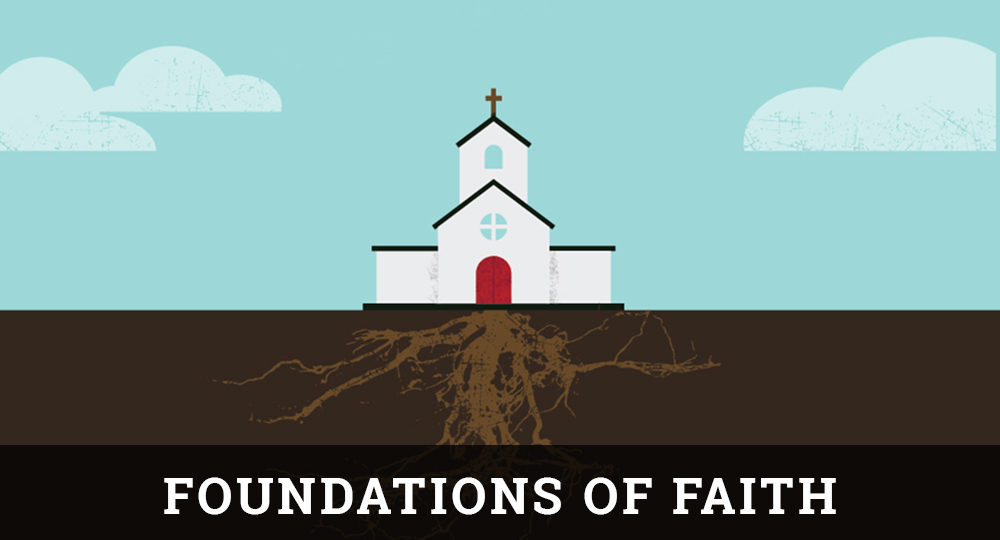The Grace of God Part Five
The Bible provides evidence that, through Jesus, God established grace as the new way of administering His moral absolutes over humanity.
The First Evidence
The apostle John taught that God established the Mosaic Law as a means of administering His eternal, moral absolutes over His chosen nation of Israel, but “grace and truth came through Jesus Christ” (Jn. 1:17).
The Second Evidence
In Romans 6:14, the apostle Paul confirmed that fact: “For sin shall not have dominion over you, for you are not under law but under grace.” Paul clearly asserted that Christians are not under the Mosaic Law.
By making the terms law and grace objects of the preposition under, he implied the grace he had in mind had the same function as the Mosaic Law. That function cannot be eternal salvation because the Law was never a means of salvation. To be under the Law or grace meant to be subject to the “power, sovereignty, command”1 of the Law or of grace as rules of life. Therefore, Paul referred to the Law and grace as ways God administered His moral absolutes.
Paul taught that being under the grace administration instead of the Law administration frees Christians from mastery by the sin nature. In verse 14 he declared, “For sin shall not have dominion over you, for you are not under law but under grace.” Thus it is advantageous to be under grace, which is superior to Law: “For what the law could not do in that it was weak through the flesh, God did by sending His own Son in the likeness of sinful flesh, on account of sin: He condemned sin in the flesh” (8:3).
However, being under grace does not give Christians liberty to sin (to be lawless): “What then? Shall we sin because we are not under law but under grace? Certainly not!” (6:15). Thus it is possible for a person to be free from the Mosaic Law without being lawless; the grace administration does not encourage a sinful lifestyle.
In Romans 7:1–4 Paul used a marriage analogy to explain his teaching in Romans 6:14. A woman is bound in marriage to her husband as long as he lives. But his death terminates her marriage and frees her to marry another man. So death terminates a binding relationship and sets one free to enter another relationship.
Paul used the analogy to indicate that Jewish Christians were freed from the binding Mosaic Law administration of God’s rule through their association with Christ’s death, and they were now free to enter a binding relationship with the grace administration of God’s rule.
The Nature of the Association With Christ’s Death
To understand the nature of a person’s association with Christ’s death, it is necessary to examine several words Paul used in Romans 6—8.
The word sin. Paul used it 25 times in Romans 6:1—7:13, but only once does it refer to an act of sin (“What then? Shall we sin because we are not under law but under grace? Certainly not!” 6:15). The other instances refer to the sin nature people inherit at the moment of conception (Ps. 51:5).
The sin nature is a disposition of enmity toward God: “The carnal mind is enmity against God; for it is not subject to the law of God, nor indeed can be” (Rom. 8:7).
Paul described the sin nature’s relationship to the unregenerate person as that of master to slave. He referred to sin reigning “in your mortal body, that you should obey it in its lusts” (6:12); being “slaves of sin” (v. 6); and “Do you not know that to whom you present yourselves slaves to obey, you are that one’s slaves whom you obey, whether of sin leading to death, or of obedience leading to righteousness?” (v. 16).
The word death. An unregenerate person is so thoroughly locked into the master-slave relationship that only death can break the bond. Either the sin nature or the unregenerate person must experience a form of death.
Romans 6:1–13 indicates that when an unregenerate person becomes a Christian, he is identified with Christ’s death, burial, and resurrection. There is a sense in which the unregenerate person actually dies with Christ at the time of salvation. One way Paul expressed this truth is found in verse 6: “Knowing this, that our old man was crucified with Him, that the body of sin might be done away with, that we should no longer be slaves of sin.” The “old man” refers to the type of person an individual is spiritually in his or her unregenerate state. When people become saved, they die in the sense that they are no longer unregenerate spiritually. They are now new people spiritually, regenerate people.
The “old man” that died is not the sin nature. Paul made that fact clear: “For he who has died has been freed from sin” (v. 7) so “that we should no longer be slaves of sin” (v. 6). In verse 2 Paul referred to “we who died to sin”; and in verse 11 he exhorted believers, “Reckon yourselves to be dead indeed to sin.” In the parallel Galatians 2:20 passage, he declared, “I have been crucified with Christ.”
When a person becomes saved, he dies with reference to the sin nature (Rom. 6:2). Through his death with Christ, he loses completely the master-slave relationship he had with his sinful disposition (sin nature) while in his unregenerate state.
Purposes of the Death
The accomplishments or purposes of death are the following:
- In Romans 6:6 Paul declared that one purpose for an unregenerate person’s crucifixion with Christ is “that the body of sin might be done away with.” The expression body of sin refers to an unregenerate person’s body that is possessed or controlled by the sinful disposition. The literal meaning of the expression done away with is “to dissolve relationships.”2 When an unregenerate person dies spiritually with Christ, his physical body terminates its obligation to function as an instrument of sin. It ceases to be “the body of sin.”
- Death with Christ also permanently terminates a person’s relationship of slavery to his sinful disposition into which he was bound for life: “We should no longer be slaves of sin. For he who has died has been freed from sin” (vv. 6–7). The expression be slaves refers to “one that is in a permanent relation of servitude to another, his will altogether swallowed up in the will of the other.”3
- In verse 4 Paul stated a third purpose for dying with Christ: “Therefore we were buried with Him through baptism into death, that just as Christ was raised from the dead by the glory of the Father, even so we also should walk in newness of life.”
Newness of life is possible because “if we have been united together in the likeness of His death, certainly we also shall be in the likeness of His resurrection” (v. 5). Paul taught that someone who believes in Christ is resurrected in that he becomes regenerate—the “new man”—with the new, favorable disposition (new nature) toward God. It is a spiritual resurrection. The new disposition and Holy Spirit give such people newness of life, which produces a new walk or way of life.
The new walk is to be characterized by righteousness: “Do not present your members as instruments of unrighteousness to sin, but present yourselves to God as being alive from the dead, and your members as instruments of righteousness to God” (v. 13).
I speak in human terms because of the weakness of your flesh. For just as you presented your members as slaves of uncleanness, and of lawlessness leading to more lawlessness, so now present your members as slaves of righteousness for holiness (v. 19).
The Result of the Death
In Romans 6:7 Paul stated the result of spiritual death with Christ: “He who has died has been freed from sin.” There is a sense in which a person who dies spiritually with Christ is freed from his sinful disposition, though he is not freed from its presence. Romans 7:14–25 indicates that the sinful disposition remains an active, unwanted guest within the Christian.
However, through spiritual death with Christ, a Christian permanently loses his position of slave under the sinful disposition; and the sinful disposition permanently loses its position of master. Thus, death with Christ results in permanent loss of obligation to yield to the sinful disposition’s control. For he who has died has been freed from sin. “The idea is that of a master claiming legal possession of a slave: proof being put in that the slave is dead, the verdict must needs be that the claims of law are satisfied and that he is no longer answerable; sin loses its suit.”4
Now if we died with Christ, we believe that we shall also live with Him, knowing that Christ, having been raised from the dead, dies no more. Death no longer has dominion over Him. For the death that He died, He died to sin once for all; but the life that He lives, He lives to God. Likewise you also, reckon yourselves to be dead indeed to sin, but alive to God in Christ Jesus our Lord. Therefore do not let sin reign in your mortal body, that you should obey it in its lusts. And do not present your members as instruments of unrighteousness to sin, but present yourselves to God as being alive from the dead, and your members as instruments of righteousness to God. For sin shall not have dominion over you, for you are not under law but under grace (6:8–14).
ENDNOTES
- William F. Arndt and F. Wilbur Gingrich, eds./trans., “hupo,” A Greek English Lexicon of the New Testament and Other Early Christian Literature (1952: translation and adaptation of Walter Bauer’s Griechisch-Deutsches Worterbuch zu den Schriften des Neuen Testaments und der ubrigen urchristlichen Literatur, 4th ed., Chicago, IL: University of Chicago Press, 1957), 851.
- J. Oliver Buswell Jr., Ten Reasons Why a Christian Does Not Live a Wicked Life (Chicago, IL: Moody Press, 1959), 20.
- Richard Chenevix Trench, “doulos,” Synonyms of the New Testament (London: Macmillan and Co., 1865), 30.
- William Sanday and Arthur C. Headlam, “A Critical and Exegetical Commentary on the Epistle to the Romans,” The International Critical Commentary (New York, NY: Charles Scribner’s Sons, 1910), 150.






